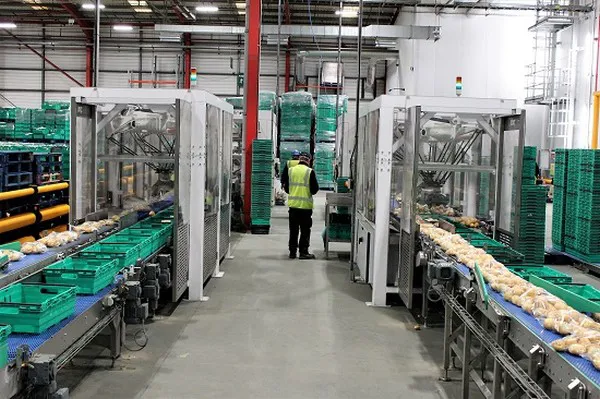End-of-line automation in the packing industry has been gaining ground for a number of years. The decrease in labour after Brexit followed by the social-distancing challenges of Covid has really pushed packers to look more closely at efficient, labour-saving solutions.
“We have seen that labour is now not only scarcer and more expensive, but also the quality of the labour supply is not what it was before. Many of our operators do not have English as their first language, so it is essential that the operation of our systems is simple to understand," explained David Jahn from BrilloPAK.
“Our systems are mainly bought by the Fresh Produce sector, so our systems have to fit into that environment.” David explains that Brillopak works on 5 principles with all of its automation systems.
Agile: Flexible for multiple SKUs. Accurate for placement in the container and gentle so as not to damage the product whilst packing at high speed.
Customisable: for the specific needs of individual packhouses.
Robust: able to work 24/7 in difficult environments.
Simple: easy to operate.
Compact: small enough to fit into most spaces.

“Some of the packing areas in UK packhouses are small, so the machines need to be compact to fit. Machines also need to last for more than ten years, but within this timescale products and pack sizes can change frequently, so our machines are designed to handle multiple scenarios with robot heads that can pick and place accurately.
“Everyone is feeling the pinch, so it is important for Brillopak to provide the ROI required at the start of the project,” says David.
“The main reason projects fail to reach the predicted ROI, is that there has not been enough time put into planning an overall solution – one that looks at the bigger picture. In fact, there is a blog on our website about phased automation, that explains this in detail. We try to involve as many people as possible at the start of a project: the management, the operators, the marketing team, as you need to look at the future and what new products will be coming online, alongside anticipated growth and market evolution.”
For companies looking to take their first steps on their automation journey, there is a new version of the company’s BR2 PunnetPAKer which offers a small-footprint installation with big-machine capabilities, for automated packing of top-sealed punnets, with gentle and accurate packing into crates or lipped boxes at high speed.
“The BR2 delivers high-speed and efficiency (50 to 140 packs a minute depending on the product); accurate control of the product through the packing process; accurate product placement in the crate/box; and highly flexible operation in a simple, robust and hygienic design.”
The single-cell UniPAKer is another proven packing workhorse, offering high speed and efficiency (50 to 150 packs/minute depending on the product); precise product placement and multiple-product capabilities, with multi-layer patterns. Simple to operate and maintain, it delivers very fast changeover within a simple, robust and hygienic design.
“Both machines have benefited from our ongoing research and development into robot dynamics, motion profiles, end-effector/gripper designs and product-handling physics. These developments have resulted in greater performance and throughput, even though both are comparatively small. We have seen a massive increase in demand for these technologies since 2016 when Brexit came about. Automation is here to stay and if it is delivered correctly, companies can redeploy labour to more value-adding tasks.“
For more information:
Sasha Kanal
GloHouse Media
sasha.kanal@glohouse.co.uk
www.brillopak.co.uk
